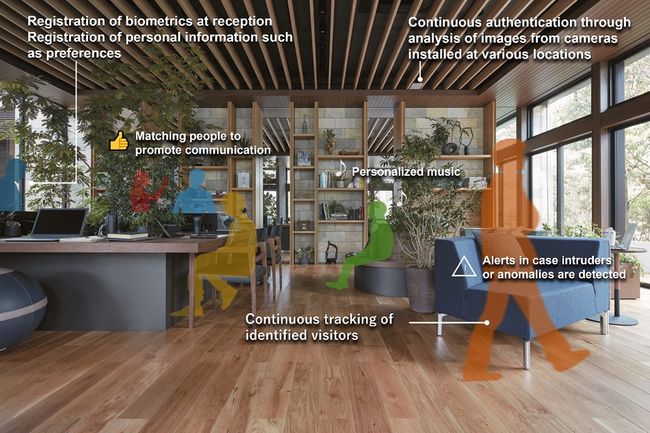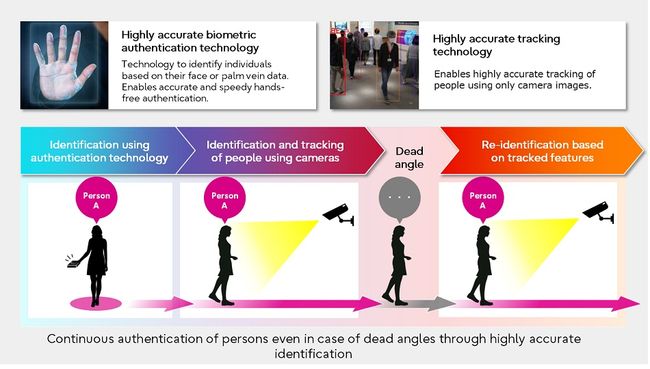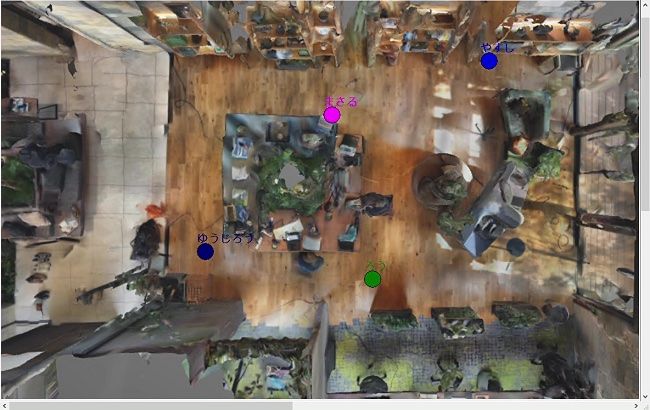Fujitsu And Misawa Homes Start Joint Trials For Personalized And Secure Living Spaces Using Continuous Authentication Technology
Fujitsu and Misawa Homes Co., Ltd. announced the start of joint trials to personalize shared spaces using authentication technology developed by Fujitsu. Through their trials, Fujitsu and Misawa aim to explore how to offer families and visitors alike comfortable, personalized, secure new ways to experience life at home.
AiThority Interview Insights: How to Get Started with Prompt Engineering in Generative AI Projects
 |
| Figure 1: Image of joint trials using technology for continuous authentication of residents and visitors |
 |
| Figure 2: Overview of Fujitsu’s technology for continuous authentication |
 |
| Figure 3: Green Infrastructure Model |
 |
| Figure 4: Image of technology for continuous authentication (bird’s-eye view) (Screen in Japanese) |
Fujitsu and Misawa Homes installed a facial recognition sensor at the reception area and cameras in the common space of a model house (1) built by Misawa Homes in 2021 to showcase Fujitsu’s technology for continuous authentication, which identifies residents and visitors through cues like their clothing or posture. By continuously identifying people and their movements in the surrounding environment, the technology can help to detect emergency situations including falls and possible injuries of residents or visitors as well as unidentified intruders, to ultimately contribute to the realization of safer housing.
The two companies are further conducting trials leveraging this technique to realize personalized living spaces tailored to residents’ personal preferences and needs.
Read More about AiThority Interview: AiThority Interview with Bill Patterson, EVP and General Manager, Applications at Salesforce
Fujitsu and Misawa plan to explore further use cases for the technology, including in contexts where safety is paramount, including nursing homes and hospitals.
Misawa Homes has been focusing on the development of housing models that contribute to the solution of various societal issues. In 2021, Misawa Homes constructed the “Green Infrastructure Model,” a model house that aims to achieve sustainability in the three areas life, health, and the environment. Misawa Homes is further engaged in a wide range of initiatives to solve societal issues through innovation, including the development of housing solutions and demonstration trials across industries.
As part of its vision for “Trusted Society,” one of its key focus areas under “Fujitsu Uvance,” Fujitsu is promoting various initiatives to contribute to the realization of a prosperous and sustainable society. Fujitsu in the 1980s started R&D in biometric technologies, creating new technologies not only for managing access to personal devices including PCs and smartphones, but also solutions for use in emergency situations.
Under the concept “living in 2030,” Fujitsu and Misawa Homes since 2021 have been focusing on the future of housing, where innovations like AI and biometric technologies will seamlessly integrate with living spaces to support and sustain society.
Fujitsu’s technology for continuous authentication combines Fujitsu’s biometric authentication and Actlyzer technology for sensing and analyzing the movement and actions of people. By linking the results of biometric identification with camera images of a specific person, the technology enables real time estimation of the position of that person while continuously authenticating them. The tracking of a person across multiple cameras remains difficult for conventional technologies because of variations caused by the positioning of cameras. To resolve this challenge, the newly developed technology enables identification of a person from multiple images based on features like clothing and a person’s posture regardless of other variations in lighting, etc. All authentication processes run in the cloud, and results are sent to devices installed in a certain area.
In addition to application in living spaces, Fujitsu further aims to apply this technology to various solutions in public spaces including real time detection of emergency situations such as people falling or smooth cashless payments triggered by a person’s specific movement or behavior.
Latest AiThority Interview Insights : AiThority Interview with Michael Schmidt, Chief Technology Officer at DataRobot
[To share your insights with us, please write to sghosh@martechseries.com]








Comments are closed.